developmnetal psychology ch1
1/34
Earn XP
Description and Tags
Name | Mastery | Learn | Test | Matching | Spaced |
|---|
No study sessions yet.
35 Terms
What is developmental psychology?
A type of psychology, which deals with behavioural changes within persons across the lifespan and differences/similarities among people.
What does developmental psychology deal with?
Behavioural changes within persons across the lifespan.
Differences among persons.
Similarities among persons.
Explaining the nature of changes.
What are the basic periods of life we distinguish?
Prenatal period
Infancy
Preschool period
Middle childhood
Adolescence
Emerging adulthood
Early adulthood
Middle adulthood
Late adulthood
Prenatal period
Conception to birth
Infancy
First 2 years of life (first month is neonatal or newborn period)
Preschool period
2-5 years (some describe children 1-3 years as toddlers, beginning of walking)
Middle school
6 to about 10 years (or until the onset of puberty)
Adolescence
Approximately 10-18 years (or from puberty to independence)
Emerging adulthood
18-25 or even 29 years - transitional period
Early adulthood
25-40 years - established adult roles
Middle adulthood
40-65 years
Late adulthood
65 years and older, but there are more categories based on functioning
Two phases of old age:
Young old: 60/65-80 years: still relatively healthy and active, but varies by individual
Old-old: 80 years on: Increased risk for physical and cognitive problems, also varies by individual
What develops when?
Biological age is never responsible for and thus doesn’t explain changes.
Changes can only be correlated with age - vehicle of change.
The scale of development:
Variability = short term changes that are more or less reversible
Change = more or less enduring, variability can predict change
Variability vs change on a graph
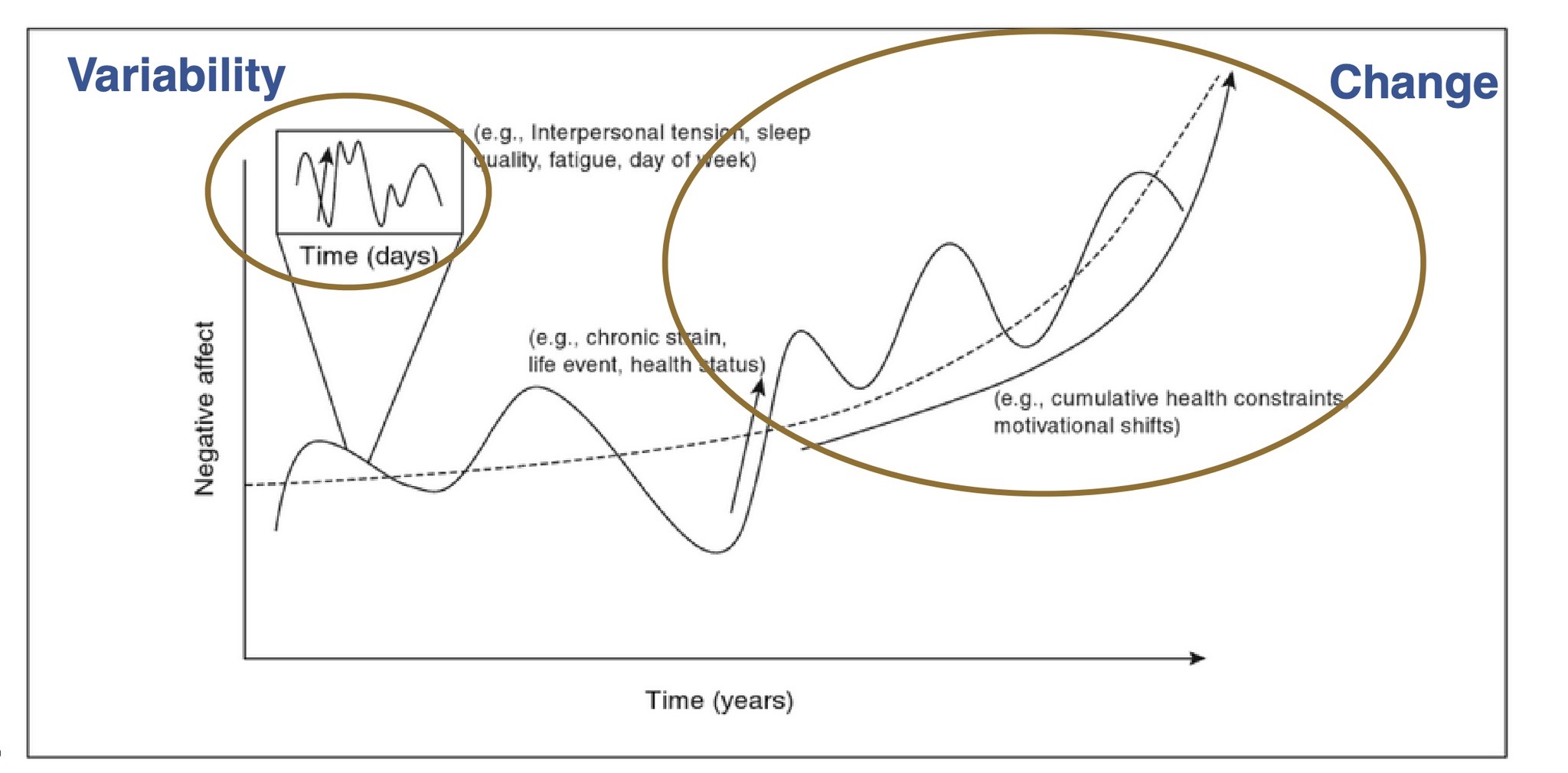
How can we investigate development?
Cross-sectional designs: individuals of different ages measured at the same point in time → How we measure differences.
Longitudinal designs: same individuals in different points → How we measure change.
What are the challenges for cross-sectional design?
Age effects confounded with cohort effects.
Cohort effects - differences in developmentally relevant variables that arise from non-age related facts to which all people from the cohort were exposed to.
What are the challenges for longitudinal designs?
Time of measurement effect confounded with age-related effects.
Time of measurement effects - effects of historical events and trends occurring when the data is being collected on observed results.
Cross-sectional designs: Advantages and Disadvantages
Advantages: Economic in time, rather cheap, shows similarities and differences between age group
Disadvantages: No information on individual trajectories, cohort effects confound, limited generalisability to other times of measurement
Longitudinal designs: Advantages and Disadvantages
Advantages: True assessment of intraindividual change, assessment of stability and change of developmental characteristics
Disadvantages: Time of measurement effects/test-retest/attrition bias, limited generalisability to other cohorts, long duration, high costs
Combining cross-sectional and longitudinal designs
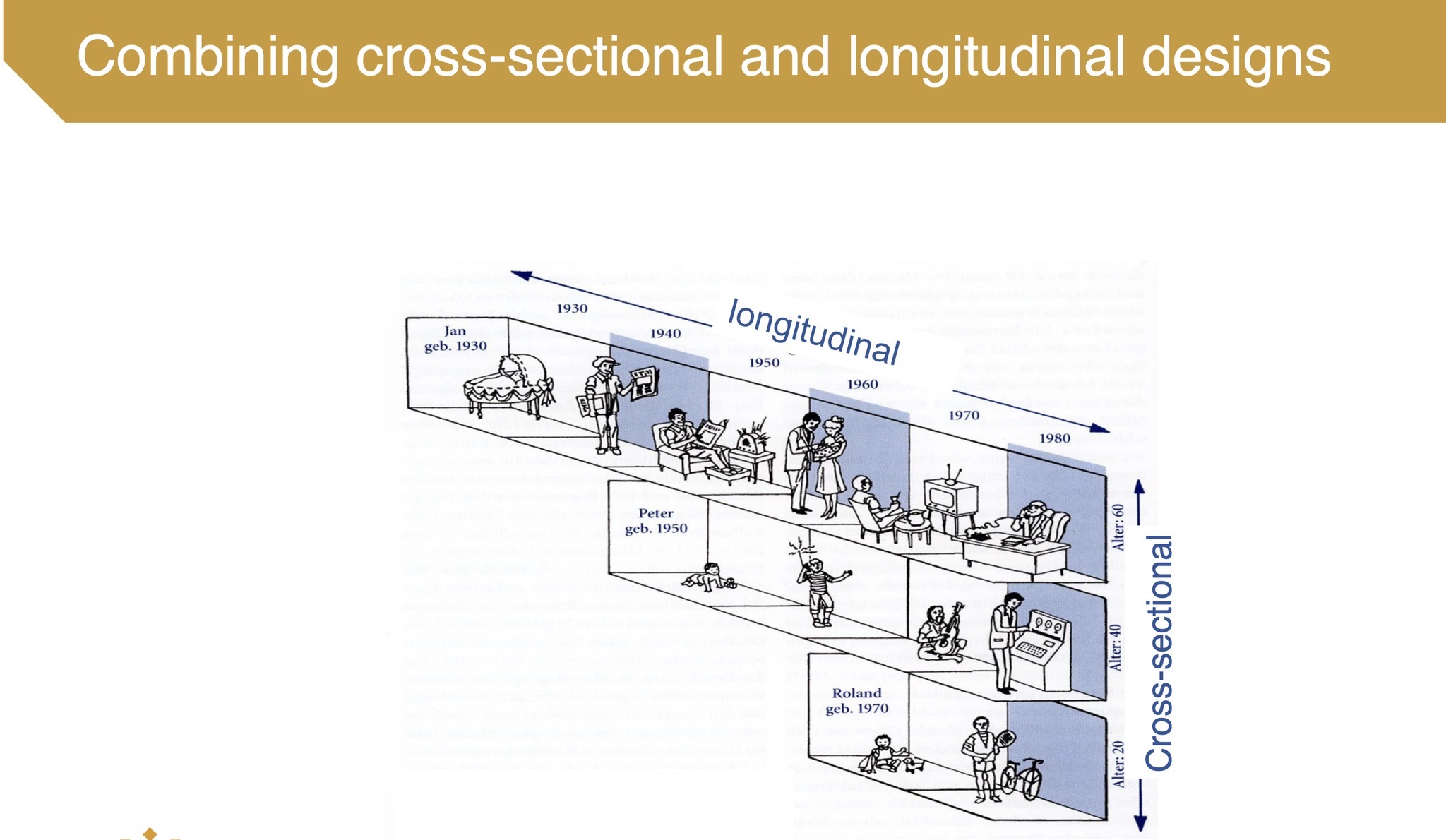

Sequence models
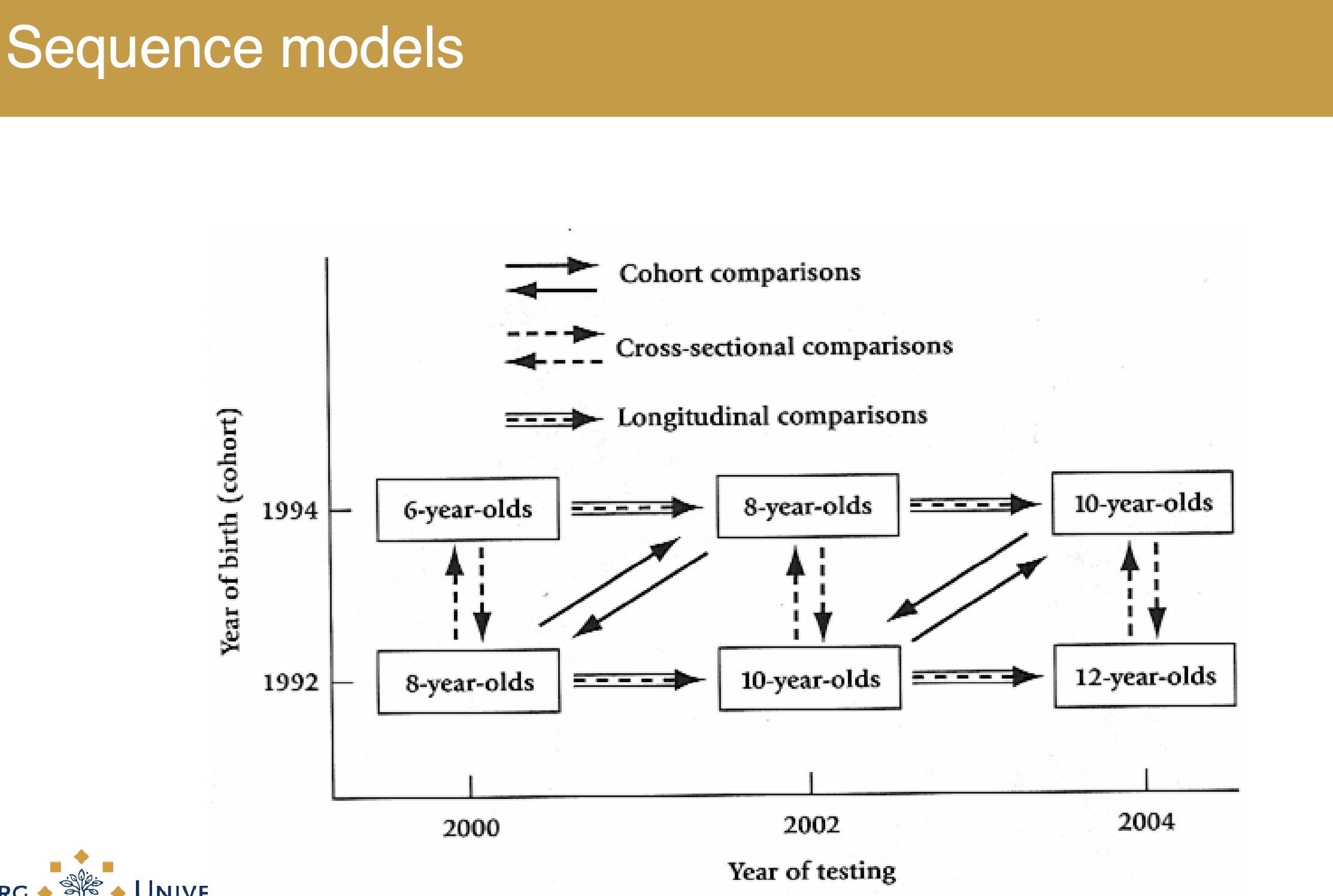
Assessment methods
Self-report vs report by proxy → Interview, Questionnaire, Diary
Behavioural observation (naturalistic vs structured)
Standardised Tests/Test batteries (comparison to norms)
Physiology (EEG, heart rate, eye tracking, sucking duration)
Research designs
Case study
Correlational design
Experimental design
Research challenges
In age groups like elders and children some measurements may differ from young adults:
Speech reception and production
Sensorimotor abilities
Suggestibility
Attention span/Fatigue
Subjective meaning of concepts
Proportion of undiagnosed clinical impairment
How can we adjust methods to abilities of individual?
Age-adjusted task material
Oral responses instead of written
Non verbal task material
Structured observation, physiological methods or report by proxy
Is the selectivity of sample representative
Response bias: Social desirability, accuracy-speed trade-off, stereotypes
Infant research:
Orientation response
Habituation: slow, changed, or stopped response to repeated presentation of the same stimulus
Dishabituation: Increase in response to a new stimulus or habituated stimulus after introducing a deviant
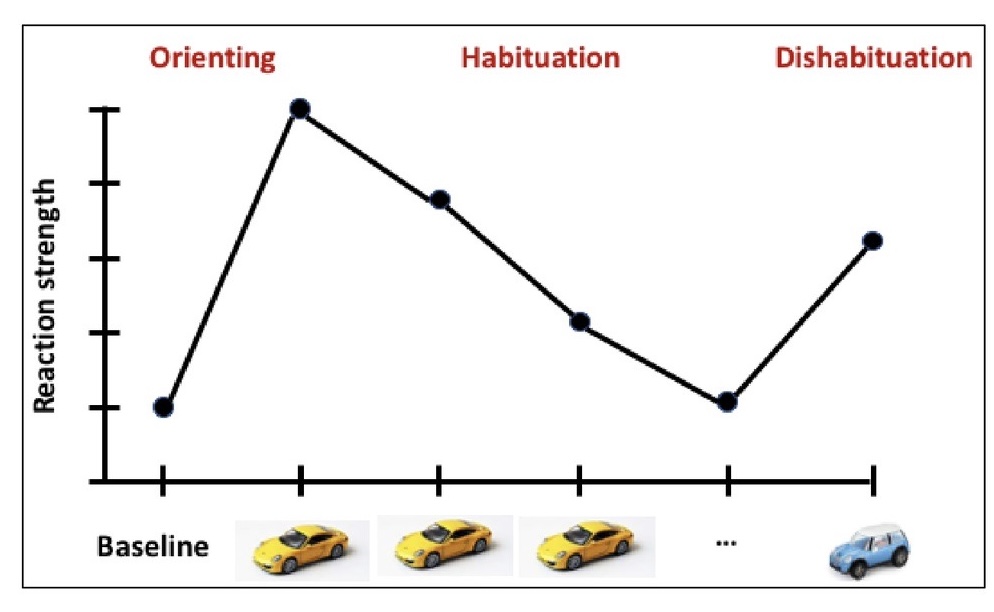
How to measurement a response by an infant?
Sucking preference
Head turn preference
Paired visual preference
Assumption: If an infant does those, it is interested. If not, it’s not.
How does age stereotype threat influence results?
Study design:
Same study material, but different instructions. Two conditions:
Reading ability
Memory ability
Affects older people, as they think that their memory is bad and perform worse.
Principles of lifespan psychology - Development is…
Lifelong: Throughout the whole life, not only during childhood or infancy.
Multidisciplinary: Human development has to be seen in a multidisciplinary way → Biologists, Neuroscientists, Historians, Economists etc.
Multidirectionality: Development is not a universal process leading in one direction, not only more mature functioning, but different features beginning to appear at different times.
Gain-loss dynamic: Development always consists of the joint occurrence of growth and decline
Plasticity and constraints: Vulnerable individuals are the most vulnerable in aversive environments and may benefit in positive.
Historical embeddedness: Development is strongly shaped by sociocultural conditions and history - cohort and time of measurement effects
Contextual development influences: Basic determinants - biological and environmental interactions + normative age graded/normative history graded/non-normative → interaction
Multidirectionality:
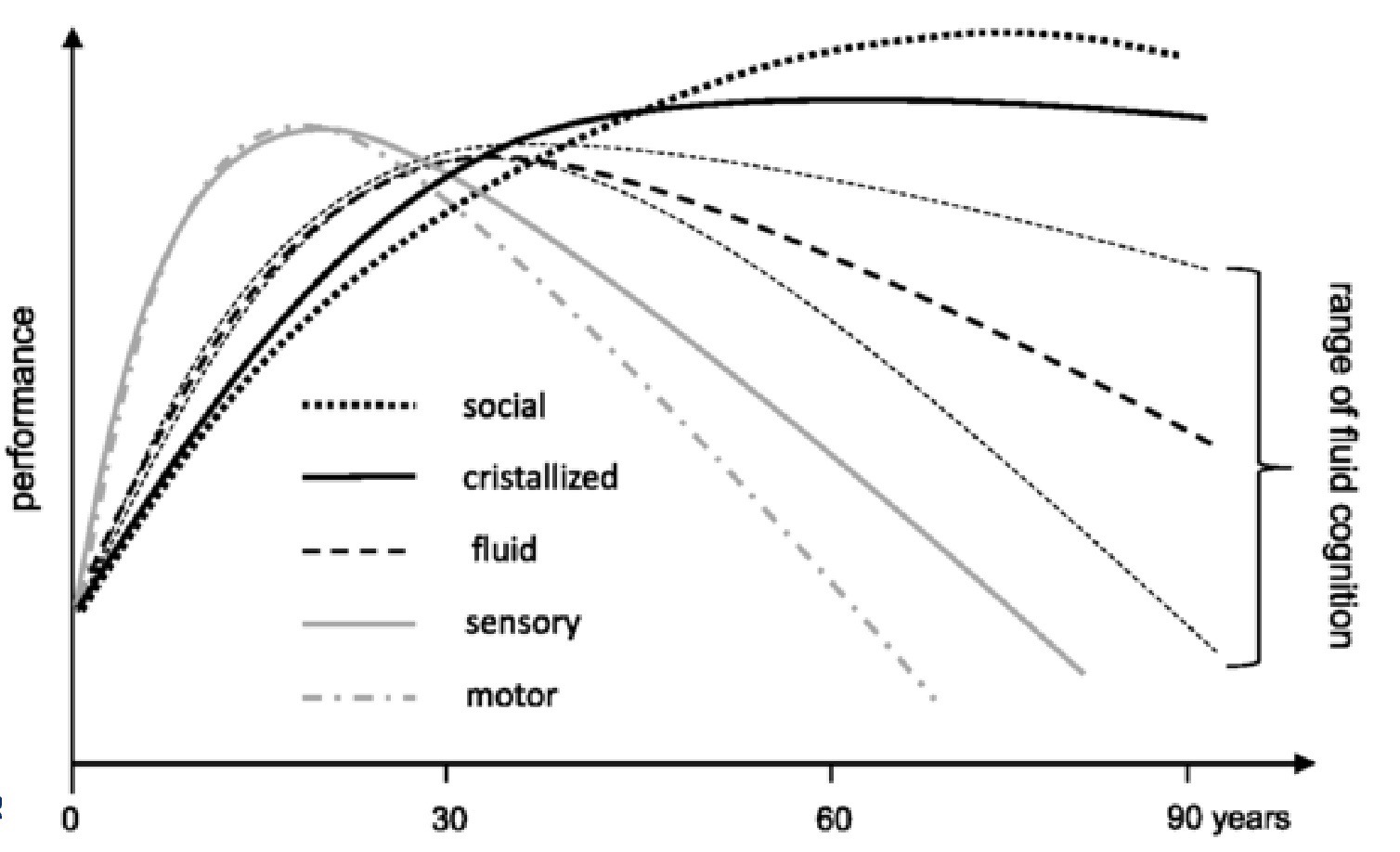
Gains and losses
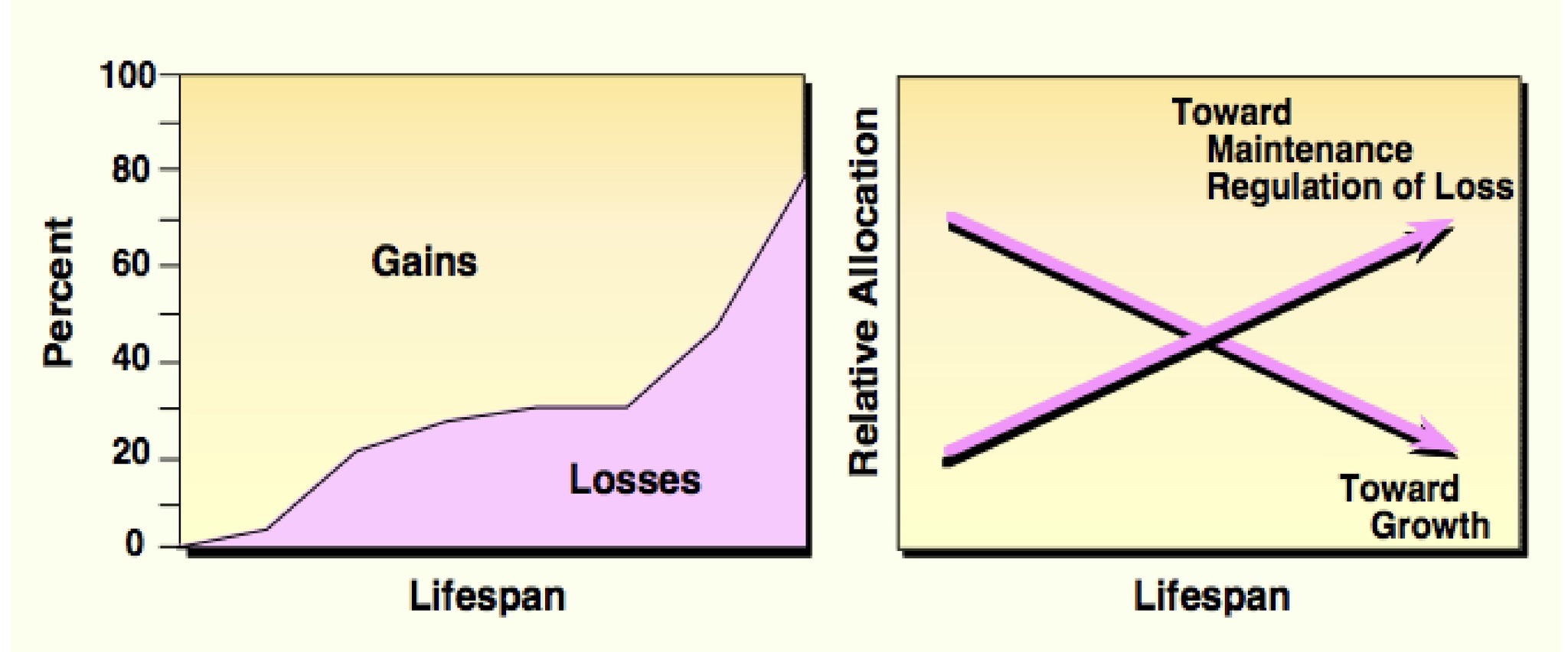
Plasticity and constraints

Contextual development influences: Influences on Development
Development is shaped by biological, environmental, and their interaction. These determinants influence development through:
Normative Age-graded influences (e.g., puberty, schooling)
Normative History-graded influences (e.g., wars, pandemics)
Non-normative influences (e.g., accidents, unique personal events
These influences interact over ontogenetic time (individual lifespan).